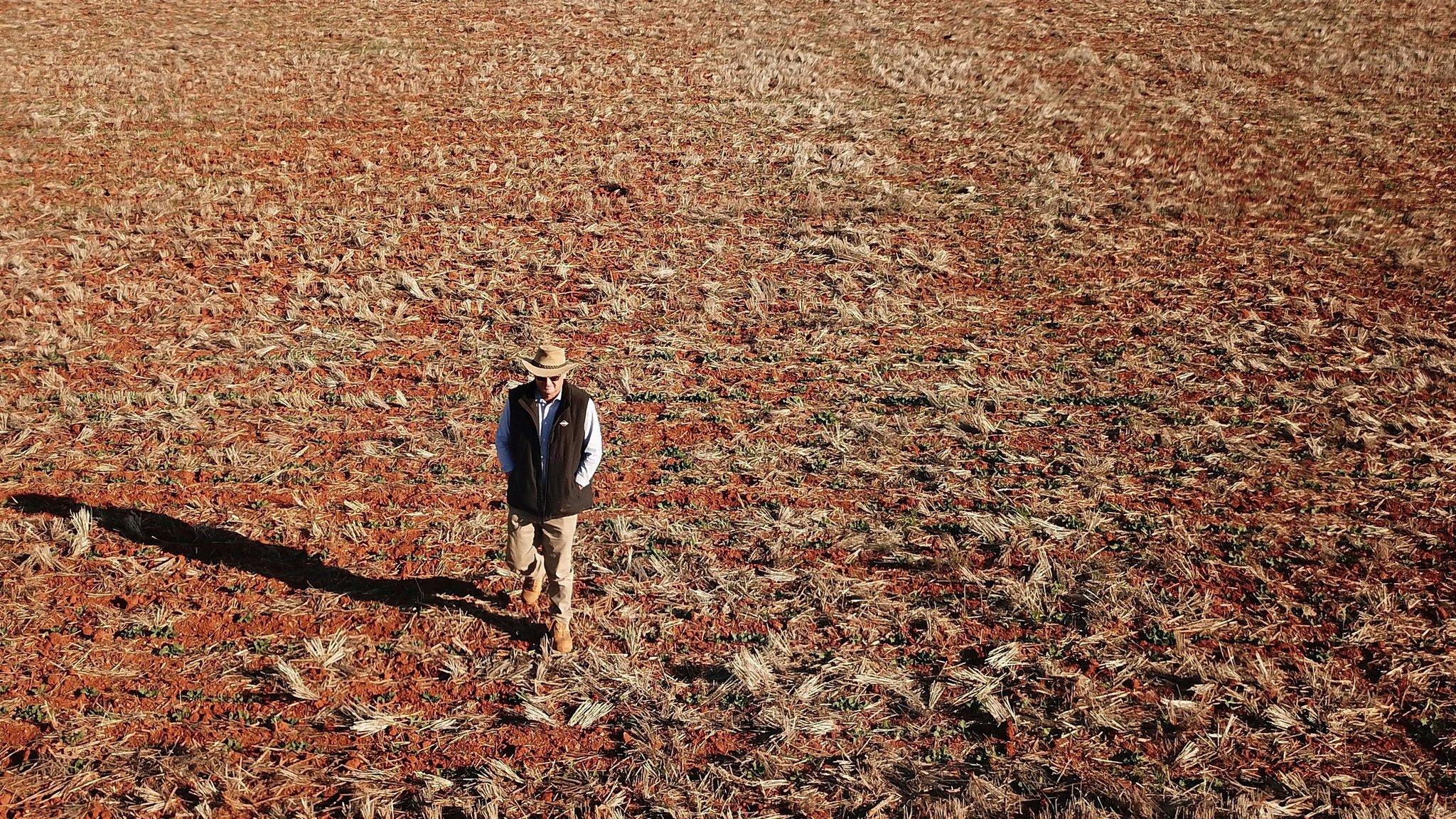What is a megadrought?
- Published
- comments

Droughts can mean that farmers can't get enough water to help their crops to grow
Climate change scientists have warned that global warming could cause long megadroughts to return in the future.
Researchers from Columbia's Earth Institute studied ice samples, sea beds and tree rings in order to identify three reasons why they think that this could happen.
Cooling water temperatures in the Pacific Ocean
Warming water in the Atlantic Ocean
Something called radiative forcing (read on to find out more about what this is)
According to the scientists, megadroughts happened during the medieval times in south-west America, between the 9th and 16th Centuries. They lasted for many years.
Now, they think that global warming could cause them to happen again.
Find out more about them below.
What is a megadrought?
A megadrought is a drought which happens on an extreme scale and for much longer than a drought would usually last (eg for two decades).
A drought happens when there is not enough rain for a long period of time. This causes the land dry to out and a shortage of water, which can have knock-on impacts, such as a reduction in how many crops can be produced, and problems for people and animals or who rely on water to drink.
During a drought, farmers in affected areas can be unable to grow crops, or feed and give water to their animals.
This can have an impact on their livelihood as people are unable to earn a living and make money from the land as they usually would.
WATCH: How a drought is affecting people in Australia (Courtesy of ABC Behind the News 2018)
What causes a megadrought?
Radiative forcing was found to be one of the causes of megadroughts.
It can be positive or negative, and a positive radiative forcing happens when the Earth's atmosphere traps more energy from the Sun.
The more of this energy that there is trapped in the atmosphere, the higher the water evaporation rate - meaning more water is sucked out of the soil making it verydry.
Burning fossil fuels and having increased levels of carbon dioxide in the atmosphere can trap more energy from the Sun, increasing radiative forcing.
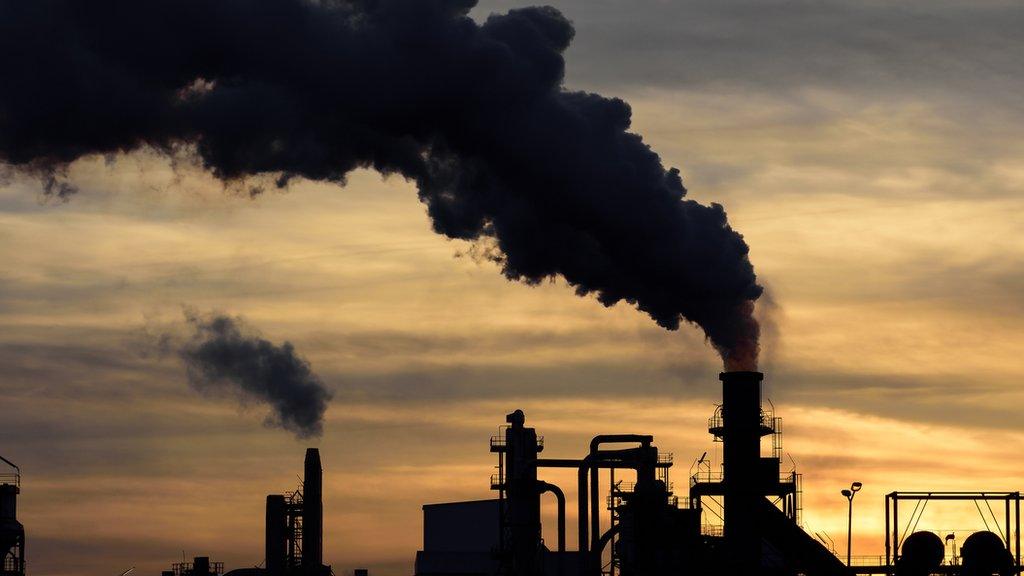
Factories and fuel emissions can contribute towards global warming
One of the other big causes of a megadrought is La Niña - a weather phenomenon that cools the temperature of the water in the Pacific Ocean.
La Niña happens around every two to seven years, alternating with another weather event called El Niño.
La Niña can push very wet weather storms to certain areas causing flooding, but leaving others without rain for very long periods of time, causing droughts.
Climate scientists have noticed that La Niña events have happened more frequently in the last few decades.
So this fact, combined with an increase in the Earth's temperature due to more of the Sun's energy being trapped, is what has led scientists to think we could be heading for more megadroughts in the future.
WATCH: What's it like for these kids living through a drought in Australia (Courtesy of ABC Behind the News 2018)
When could a megadrought happen?
The scientists have said megadroughts are very difficult to predict.
"When will there be a megadrought? I don't think anyone can say," lead scientist on the study Nathan Steiger told National Geographic.
Peter Fawcett, a paleoclimatologist at the University of New Mexico (who was not involved in the study), added: "It certainly looks like with warmer temperatures that we're going to see more megadroughts, but we can't predict precisely how many or how big they'll be."
The scientists think the decades-long droughts would only affect certain areas, like south-west America.
However, after this research, there is a much better understanding of how and why megadroughts happen, showing that the conditions exist for them to potentially happen again at some point in the future.
The research was published in the science journal Science Advances.
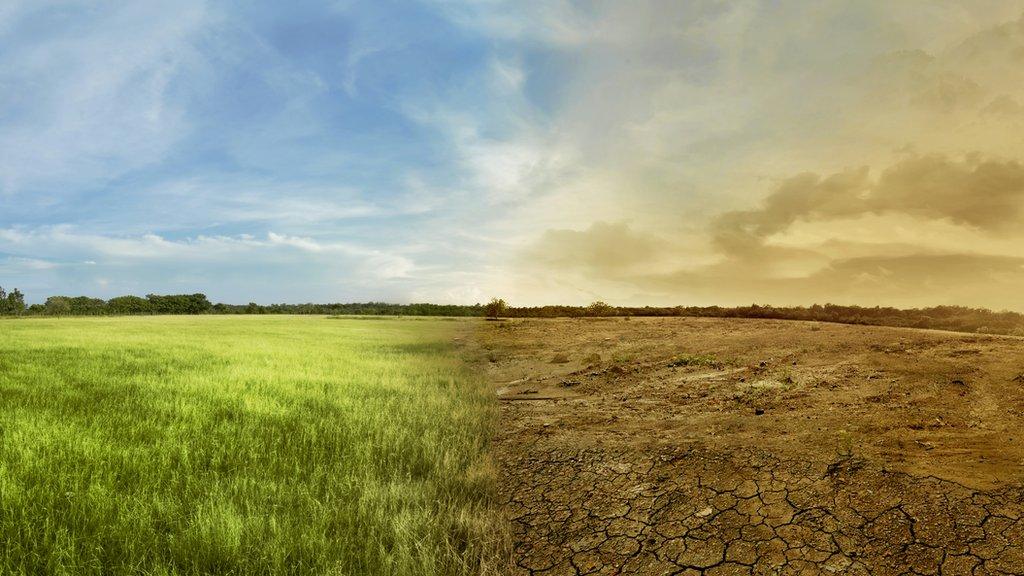
How a landscape can change as a result of drought
- Published19 June 2015
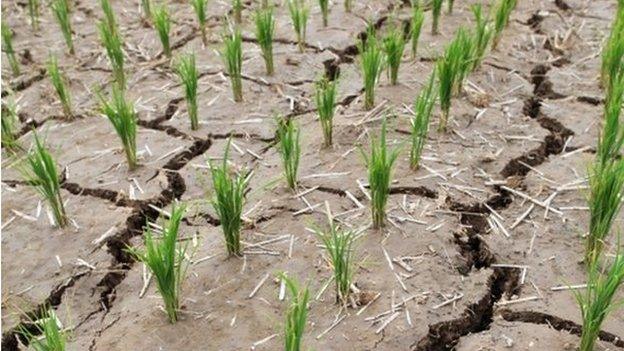
- Published10 November 2015
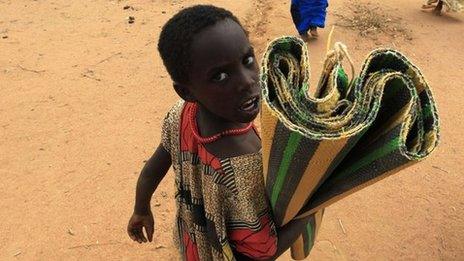
- Published20 August 2018
